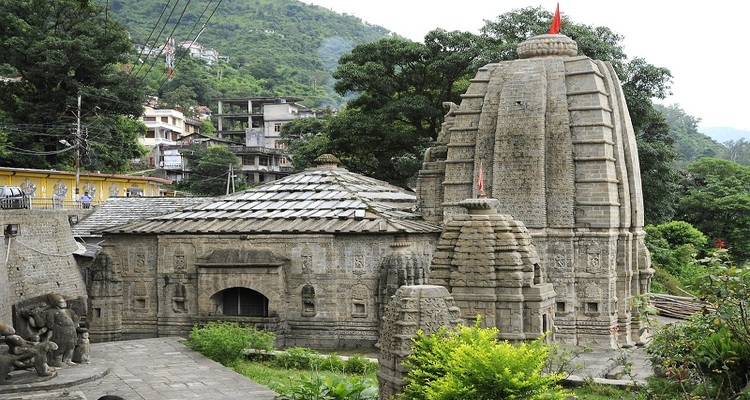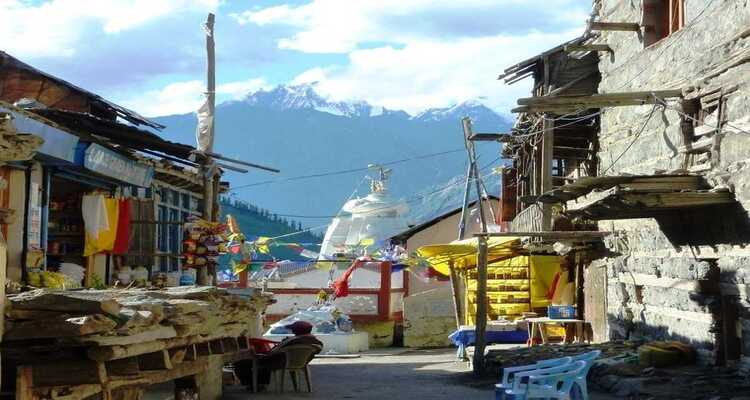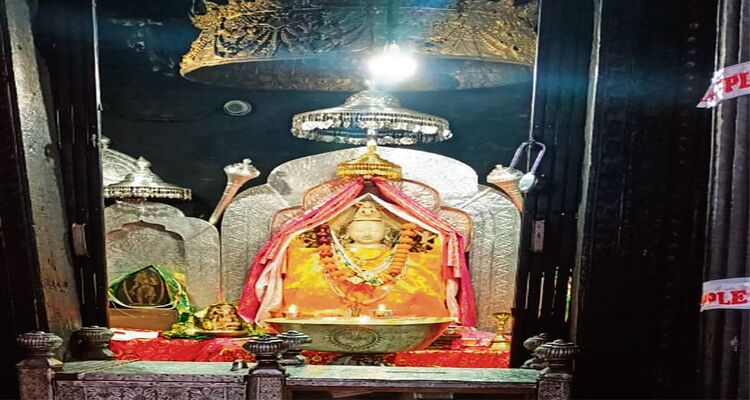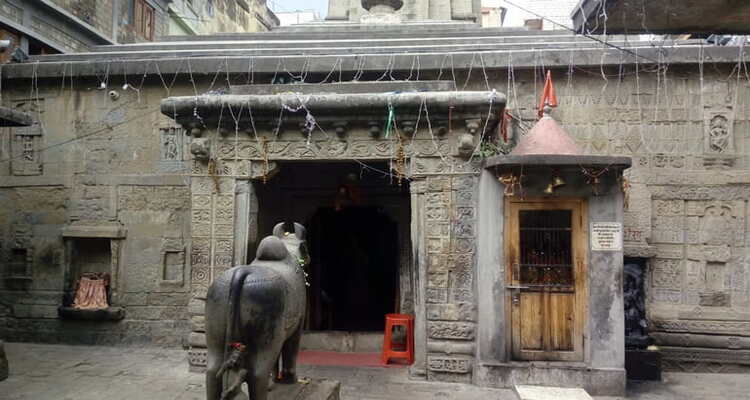
Trilokinath is the most sacred pilgrimage after Kailash Mansarovar. The specialty of this temple is that Hindus worship Trilokinath deity as Lord Shiva while the Buddhists worship the deity as Arya Avlokiteshwara and Tibetans call it Garja Fagspa. Nestled in the heart of the Spiti Valley, the Trilokinath Temple is a significant religious site that showcases the diverse cultural heritage of the region. The temple, located in the village of Trilokinath in Himachal Pradesh, is a symbol of the confluence of Hinduism and Buddhism, two major religions that have coexisted in harmony in this region for centuries.

History and Significance of Trilokinath Temple
The temple’s significance lies not just in its religious importance but also in its historical and cultural significance. Trilokinath, which means “Lord of the Three Worlds” in Sanskrit, is believed to be an important pilgrimage site for both Hindus and Buddhists. According to Hindu mythology, Trilokinath is considered to be one of the 12 Jyotirlingas, a sacred linga or representation of Lord Shiva. The temple is also associated with the legend of the sage Markandeya, who is said to have prayed to Lord Shiva here.
The cultural importance of Trilokinath Temple
The Trilokinath Temple is dedicated to Lord Shiva and is believed to be one of the oldest temples in the region, with a history dating back to the 10th century. However, the temple has undergone several renovations and additions over the years, with the latest one being carried out in the 19th century by the King of Zanskar. The temple’s architecture is a blend of Indian and Tibetan styles, reflecting the cultural influences of both regions. Apart from its religious and cultural significance, the Trilokinath Temple also offers stunning views of the surrounding snow-capped mountains and the Spiti Valley. The temple is situated at an altitude of 2760 meters and can only be reached by trekking through the rugged terrain of the region. The trek to the temple is a challenging one but is worth it for the spectacular views and the opportunity to explore the region’s rich cultural heritage.

The architectural style of Trilokinath Temple
The Trilokinath Temple exhibits a unique architectural style that fuses Indian and Tibetan influences. Its stone and wood structure is adorned with intricate carvings of Hindu deities on the outer walls, while the interior showcases Buddhist prayer wheels and silk banners, representing the harmonious coexistence of Hinduism and Buddhism in the Spiti Valley. Overall, the Trilokinath Temple’s architectural style is a testament to the artistic prowess and cultural syncretism of the region. Its blend of Indian and Tibetan influences creates a visually stunning and spiritually uplifting space, inviting visitors to immerse themselves in the rich cultural heritage of Hinduism and Buddhism in the Spiti Valley.
The history and evolution of Hinduism and Buddhism in Spiti
For Buddhists, Trilokinath is considered to be the abode of the Bodhisattva Avalokiteshvara, who is believed to have taken the form of Lord Shiva. The temple’s location at the confluence of the Spiti and Chenab rivers is also considered to be a sacred site for Buddhists. The temple’s walls are adorned with murals depicting both Hindu and Buddhist deities, reflecting the unique blend of the two religions in the region. Initially, Spiti was predominantly influenced by the Bon religion, a pre-Buddhist spiritual tradition. With the advent of Buddhism, particularly in the 8th century, Buddhism began to flourish in the region, coexisting with the existing Bon practices. Over time, Hinduism also found its way into Spiti, resulting in a unique blend of Hindu and Buddhist traditions, rituals, and architectural styles that can be witnessed in the temples and monasteries of the region.

Major festivals celebrated at Trilokinath Temple
Trilokinath Temple is renowned for celebrating several major festivals throughout the year, attracting devotees and visitors from far and wide. One of the most significant festivals is the Trilokinath Fair, held in August, where devotees gather to worship Lord Shiva and seek his blessings. During this festival, a grand procession takes place, accompanied by traditional music and dance performances, creating a vibrant and festive atmosphere. Another important festival is the Hemis Festival, celebrated in June, which showcases the rich cultural heritage of the region with masked dances, vibrant costumes, and religious rituals. These festivals provide a wonderful opportunity to witness the devotion and vibrant traditions of the local community in the enchanting setting of Trilokinath Temple.

In conclusion, the Trilokinath Temple is a unique religious site that showcases the confluence of Hinduism and Buddhism in the Spiti Valley. The temple’s historical and cultural significance, coupled with its stunning location, make it a must-visit destination for anyone interested in exploring the region’s rich heritage. Whether you are a religious pilgrim or a curious traveler, the Trilokinath Temple is sure to leave you in awe of the region’s unique blend of cultures and traditions.
Leave a Reply